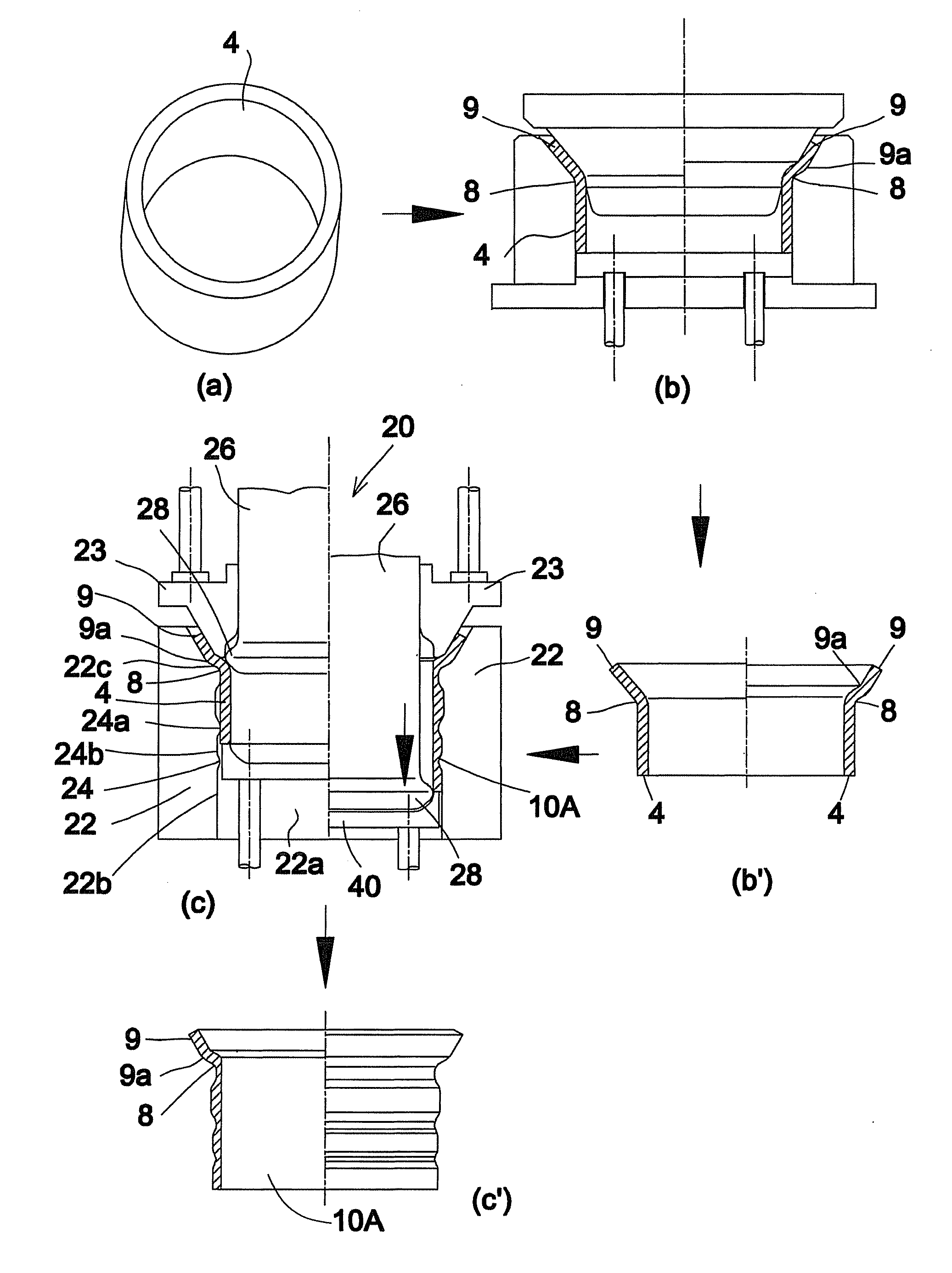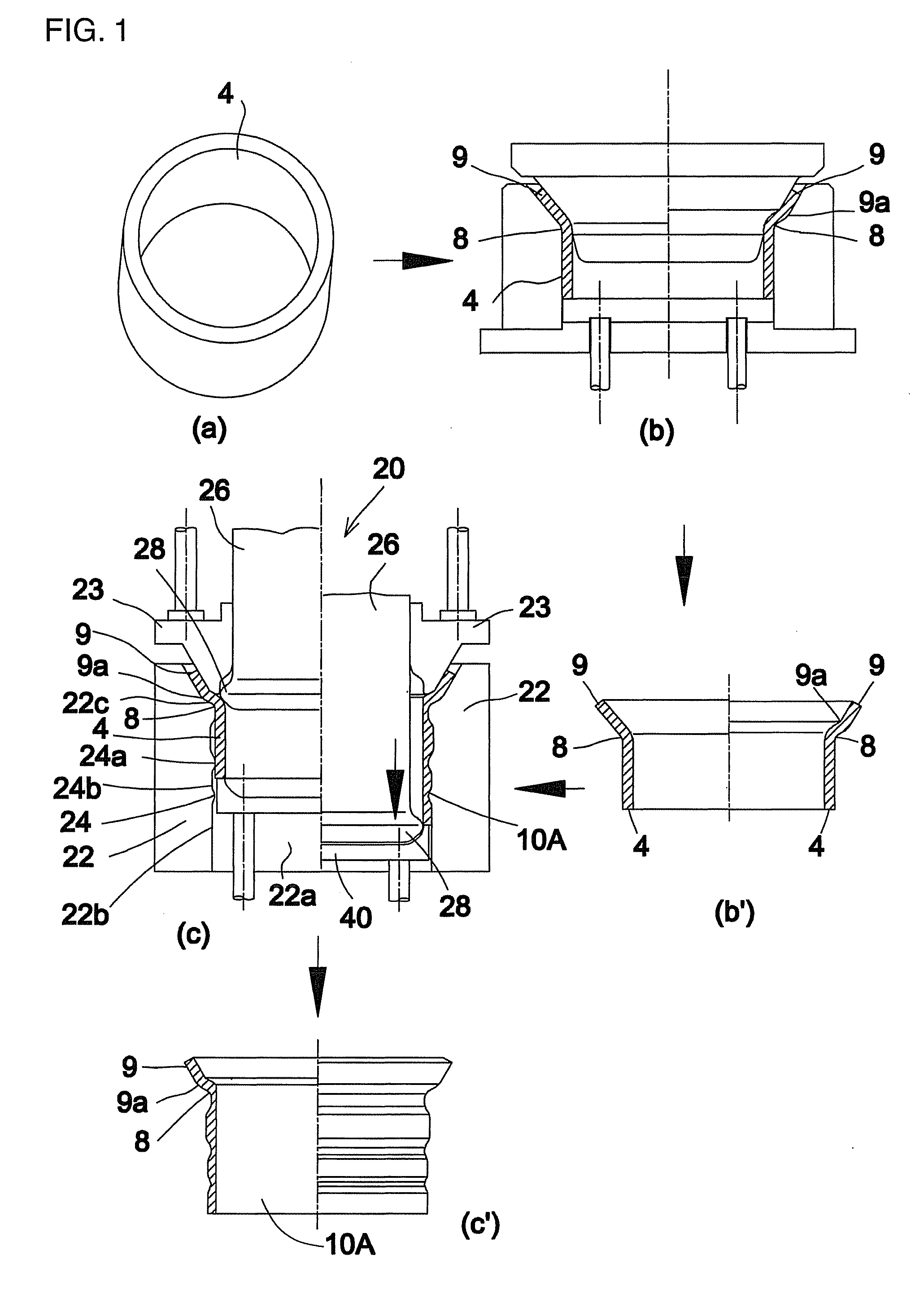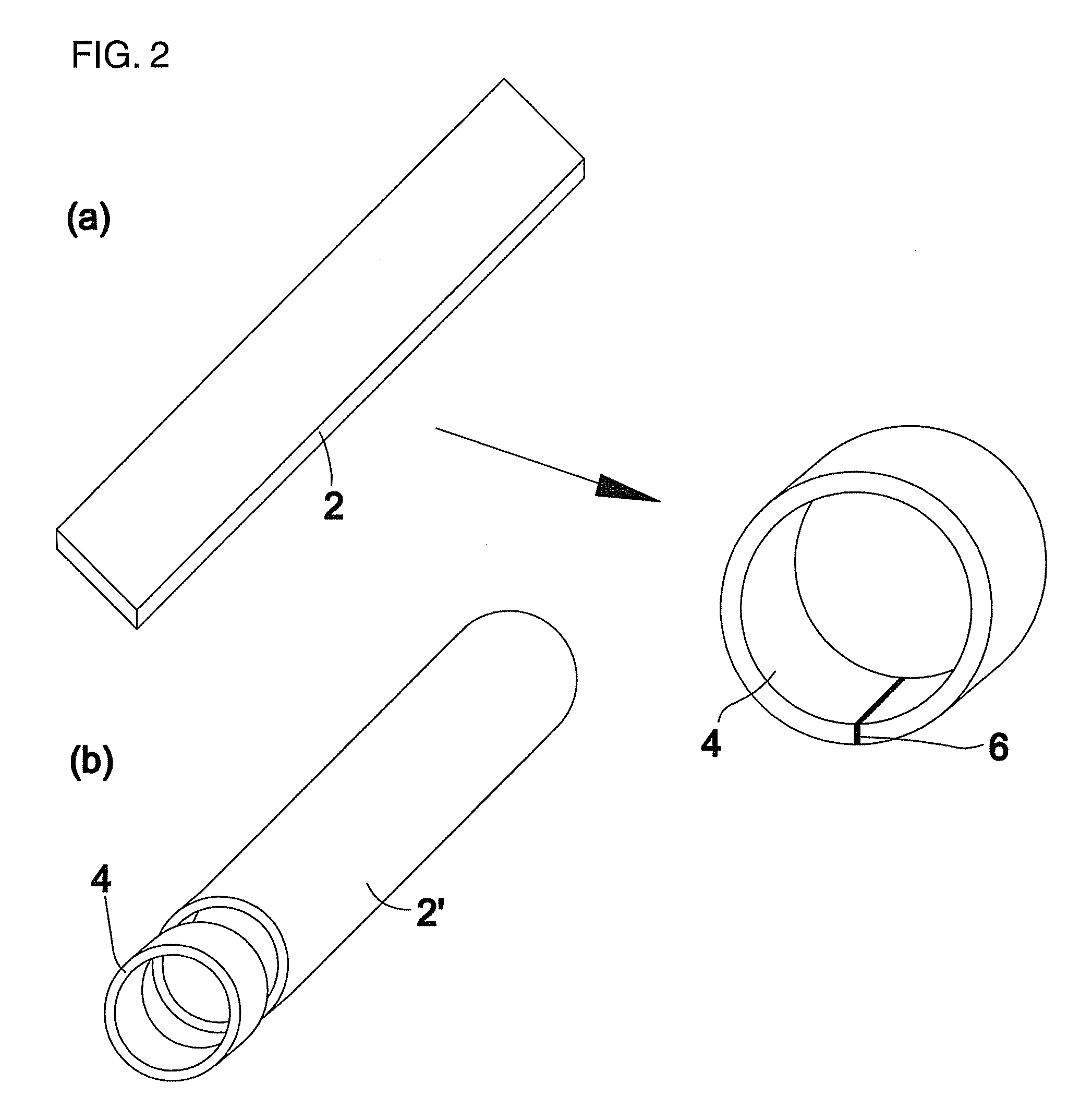Method of manufacturing a wheel rim for a vehicle
a manufacturing method and technology for vehicles, applied in the direction of manufacturing tools, transportation and packaging, metal rolling arrangements, etc., can solve the problems of non-constant thickness of vehicle wheel rims, high cost of flow-forming equipment, and difficulty in forming at successive steps, so as to achieve the effect of being more resistant to being drawn and being easy to form at the subsequent steps
- Summary
- Abstract
- Description
- Claims
- Application Information
AI Technical Summary
Benefits of technology
Problems solved by technology
Method used
Image
Examples
first embodiment
[0093]In the method of manufacturing the wheel rim 10B for a vehicle according to the first embodiment of the present invention, as illustrated in (c) of FIG. 1 and FIG. 6, the die 22 may be constructed of an outer die having a cylindrical bore 22a and an inner side surface 22b. The inner side surface 22b of the outer die may form the convex and concave surface 24. The punch 26 may be constructed of an inner punch which moves into or out from the cylindrical bore 22a of the outer die 22 in the axial direction of the cylindrical bore. The protrusion 28 may be formed at an outside surface 26e of the inner punch. The flange portion of the tubular material 9 may be bent outwardly in the radial direction of the tubular material 4.
[0094]As illustrated in FIG. 6, a flange receiving portion 22c, with which the flange portion of the tubular material 9 engages, may be formed at an upper end portion of the inner side surface 22b of the outer die 22. The tubular material 4 may be set to the out...
second embodiment
[0098]In the method of manufacturing the tubular member 10 according to the second embodiment of the present invention, as illustrated in FIGS. 11 and 12, the die 22 may be constructed of an inner die having an outer side surface 22e. The outer side surface 22e of the inner die 22 may be constructed to be the convex and concave surface 24. The punch 26 may be constructed of an outer punch having an cylindrical bore 26a and an inner side surface 26b. The protrusion 28 may be formed at the inner side surface 26b of the outer punch.
[0099]A flange receiving portion 22d, with which the flange portion of the tubular material 9 engages, may be formed at an upper end portion of the outer side surface 22e of the inner die 22. The tubular material 4 may be set to the inner die 22 by causing the flange portion of the tubular material 9 to contact and engage the flange receiving portion 22d.
[0100]An outer diameter of a portion of the inner die 22 where the convex portion 24a is provided may be...
PUM
| Property | Measurement | Unit |
|---|---|---|
| Angle | aaaaa | aaaaa |
| Thickness | aaaaa | aaaaa |
| Bending strength | aaaaa | aaaaa |
Abstract
Description
Claims
Application Information
 Login to View More
Login to View More - R&D
- Intellectual Property
- Life Sciences
- Materials
- Tech Scout
- Unparalleled Data Quality
- Higher Quality Content
- 60% Fewer Hallucinations
Browse by: Latest US Patents, China's latest patents, Technical Efficacy Thesaurus, Application Domain, Technology Topic, Popular Technical Reports.
© 2025 PatSnap. All rights reserved.Legal|Privacy policy|Modern Slavery Act Transparency Statement|Sitemap|About US| Contact US: help@patsnap.com



